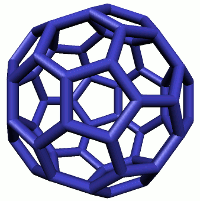

Dr. Florentino López Urías
Main Area of Expertise: Nanoscience and Nanotechnology: Magnetism
Work Address: Camino a la Presa San José 2055, Col. Lomas 4ª Sección C.P. 78216, San Luis Potosí, S.L.P., México.
Work Phone: +52 (444) 8342000 ext. 7238
Electronic mail: flo@ipicyt.edu.mx, flo.lopezurias11@gmail.com.
Welcome to the López-Urías group; our research is focused on the study of the electronic properties of diverse carbon and transition metal nanostructures. Theoretical methods such as density functional theory, tight-binding, and force fields, among others, are used to describe magnetic, optical, structural, and catalytic properties of fullerenes, carbon nanotubes, graphene, carbon nanoribbons, carbon clusters, transition metal (TM) chalcogenide layered materials, TM-clusters, and TM-wires. We have a special interest in developing of spintronic and valleytronic topics in nanomaterials.

RECENT PUBLICATIONS:
-
Ossiel Aguilar-Spindola, Alberto Rubio-Ponce, Florentino López-Urías, Francisco Sánchez-Ochoa. Electronic and optical properties in helical trilayer graphene under compression. JOURNAL OF PHYSICAL CHEMISTRY CHEMICAL PHYSICS 27, 11541 (2025).
-
Elias Andrade, Florentino López-Urías, Gerardo G. Naumis. Flat bands without twists through the use of a one harmonic moiré system: topological nature of modes and electron-electron pairing in periodic uniaxial strained or crenellated graphene nanoribbons. 2D MATERIALS 12, 015016 (2025).
-
Adriana Rodríguez-Montelongo, Felipe de Jesús Barraza-García, Brenda I. Orea-Calderón, Florentino López-Urías, Emilio Muñoz-Sandoval. Engineered MoS₂ Nanostructures via Ultrasonic Liquid-Phase Exfoliation: Morphological Diversity for Enhanced Electrochemical Applications. MATERIALS RESEARCH EXPRESS 12, 055001 (2025).

RESEARCH TOPICS
-
Thermodynamics in magnetic nanostructures and clusters
-
Electron emission and transport properties of nanostructures
-
Design and simulation of new nanostructured magnetic materials
-
Chemical doping in carbon nanostructures
-
Magnetic alloys of nanostructured systems
-
Design of new magnetic laminar systems
-
Design and simulation of magnetic molecular systems
-
Nanostructured magnetic quasicrystals
THEORETICAL MODEL SKILLS
-
Hubbard model (exact calculations)
-
Quantum Heisenberg model (exact calculation)
-
Classical Heisenberg model (Monte Carlo Simulation)
-
Modeling from first principles and Molecular Dynamics
-
Ising model (exact calculations)
-
Hubbard-Holstein model (electron-phonon interaction)
-
Super-exchange model type Kondo (Monte Carlo Simulations)
-
Hückel and extended Hückel model
-
Micromagnetism (Dynamic Simulation of Magnetization)
NUMERICAL METHODS AND SOFTWARE
-
Method of Lanczos (diagonalization of large matrices)
-
Monte Carlo method (minimum energy surfaces)
-
Genetic algorithms method (geometric optimization)
-
SIESTA and TRANSIESTA codes (Electronic structure, Base: LCAO)
-
ABINIT code (calculations of electronic structure, Base: P-Waves)
-
OOMMF code (micromagnetism, Equation Landau-Lifshitz-Gilbert)
-
PWSCF code (calculations of electronic structure, plane waves)
-
GULP (Force-field calculations
-
YAMBO (Many-body perturbation theory: GW and BSE calculations)


